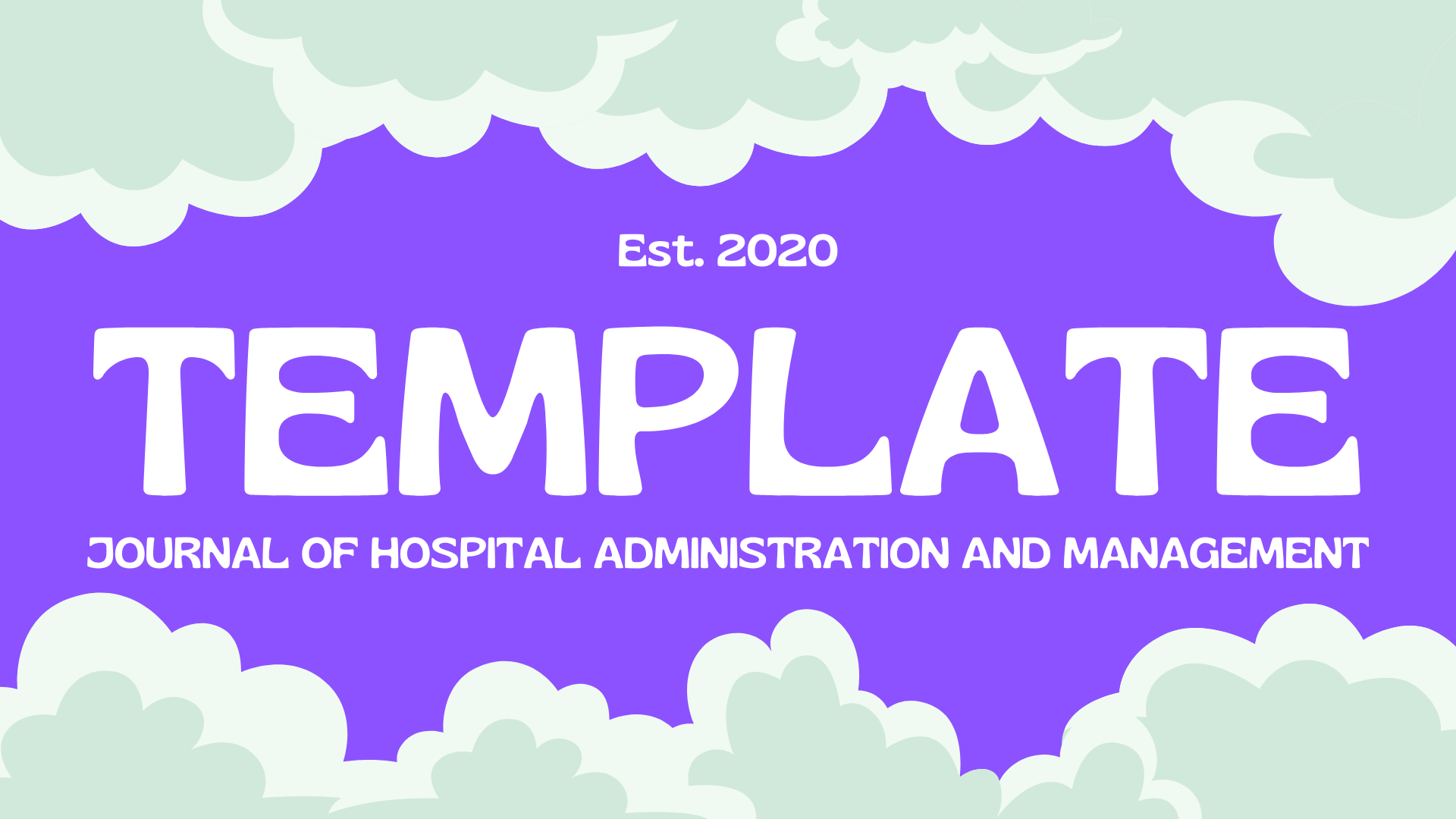ANALYSIS OF THE READINESS OF THE USE OF PUBLIC HEALTH CENTER MANAGEMENT INFORMATION SYSTEMS IN OUTPATIENT ADMISSIONS AT THE TECHNICAL IMPLEMENTATION UNIT OF THE PULAU GADANG COMMUNITY HEALTH CENTER
DOI:
https://doi.org/10.54973/jham.v4i2.380Keywords:
Information System, Management, Public Health CenterAbstract
The public health center information system is arrangement that provides information to make assist the decision process in carrying out health center management. Based on the results of limited interviews, in 2015 the technical implementation unit of the Pulau Gadang community health center had used a generic regional health information system but was not run again because many tools were damaged and not found, then withdrawn by the Health Office. The purpose of the study was to find out about the readiness of the use of public health center management information systems in outpatient admissions at the technical implementation unit of the Pulau Gadang community health center. This research uses qualitative research with an analytical descriptive approach and uses the Content Analysis model, with a total of 6 informants. The research was conducted using in-depth interviews, observation and document review. The results showed that in general, the technical implementation unit of the public health center of Pulau Gadang was not ready to use the management information system of the public health center because there were still shortcomings in the Man variable, there was no training on the management information system of the public health center and there was no information technology (IT) officer, in the Money variable, there was no budget for the implementation of the management information system of the public health center, on the Material variable, the registration counter facilities are not complete, on the Machine variable, the laptop/computer at the registration counter is not effective because it has not been integrated with the public health center management information system and the printer is in another room, then on the Methods variable, there is no official letter from the Health Office for the obligation to use the public health center management information system and the patient registration SOP is not displayed at the registration counter. Suggestions in this study are the addition of information technology (IT) officers to operate the puskesmas management information system, special training on the puskesmas management information system for registration counter officers, budgeting funds for the implementation of the puskesmas management information system, using queue numbers during outpatient registration, the need for additional machines/facilities at the registration counter such as laptops/computers and printers, displaying patient registration SOP at the outpatient registration counter.
Downloads
References
Aditya, F. S. (2022). Analisis Pengaruh Beban Kerja Terhadap Kinerja Petugas Administrasi Di Rumah Sakit Awal Bros Panam. Skripsi Strata Satu, Universitas Awal Bros Pekanbaru, Pekanbaru.
Christanti, N.D., & Pratiwi, R.D. (2016). Analisis Penyebab Kegagalan Penggunaan Sistem Informasi Manajemen Puskesmas (SIMPUS) Dalam Penerimaan Pasien Rawat Jalan Di Puskesmas Adimulyo Kabupaten Kebumen. Jurnal Kesehatan Vokasional, 1(1), 13.
Fadilah, H., Sophiah, S., Syahidin, Y., Gunawan, E., & Yuniarty, N. (2021). Perancangan Sistem Informasi Pelepasan Informasi Rekam Medis Rawat Jalan Di Klinik Utama Medika Antapani. Explore:Jurnal Sistem Informasi Dan Telematika, 12(2), 126.
Gunawan, I. (2022). Metode Penelitian Kualitatif: Teori & Praktik. Jakarta Timur : Bumi Aksara.
Handayani, F. (2021). Faktor Penyebab Tidak Terlaksananya Sistem Informasi Manajemen Puskesmas.
Hawadah, S. (2021). Evaluasi Sistem Informasi Manajemen Puskesmas (SIMPUS) Dalam Meningkatkan Mutu Pelayanan Kesehatan Di Puskesmas Jemursari. Skripsi Strata Satu, Universitas Bhayangkara, Surabaya.
Heryana, A. (2019). Buku Ajar Metodologi Penelitian Kesehatan Masyarakat. Jakarta: e-book tidak dipublikasikan.
Indryani, F. (2022). Analisis Kepatuhan Petugas Dalam Penggunaan Alat Pelindung Diri Di Instalasi Pemeliharaan Sarana Dan Prasarana Rumah Sakit Awal Bros Panam. Skripsi Strata Satu, Universitas Awal Bros Pekanbaru, Pekanbaru.
Kementerian Kesehatan RI. (2011). Pedoman Sistem Informasi Kesehatan. Jakarta.
Manurung, J., dkk, (2021). Kebijakan dan Manajemen Pelayanan Kesehatan. Yayasan Kita Menulis.
Maruapey, G.N., & Achadi, A. (2022). Implementasi Sistem Informasi Manajemen Puskesmas Dalam Penunjang Pelayanan Pelayanan Rekam Medis Di Puskesmas. Jurnal Medika Hutama, 03(02).
Nafis, Z.M., dkk. (2021). Tinjauan Penerapan Aplikasi Sistem Informasi Kesehatan Daerah (SIKDA) Generik Di Puskesmas Tanjung Balai Karimun Tahun 2021. Jurnal Rekam Medis (Medical Record Journal).
Peraturan Menteri Kesehatan Republik Indonesia Nomor 43 Tahun 2019 Tentang Pusat Kesehatan Masyarakat. https://peraturan.bpk.go.id. Diakses tanggal 10 Januari 2023.
Peraturan Pemerintah Republik Indonesia Nomor 46 Tahun 2014 Tentang Sistem Informasi Kesehatan. https://peraturan.bpk.go.id. Diakses tanggal 10 Januari 2023.
Rewah, D.R., Sambiran, S., & Pangemanan, F. (2020). Efektivitas Penerapan Sistem Informasi Manajemen Puskesmas (SIMPUS) Di Kota Manado (Studi Puskesmas Bahu). Eksekutif Jurnal Jurusan Ilmu Pemerintahan 1-10.
Tiara, L.I., & Subinarto. (2019). Analisis Penyebab Tidak Digunakannya Sistem Informasi Manajemen Puskesmas (SIMPUS) Dalam Penerimaan Pasien Rawat jalan Di Puskesmas Kalimas Kecamatan Randudongkal Kabupaten Pemalang. Jurnal Rekam Medis dan Informasi Kesehatan 2(2), 65.














